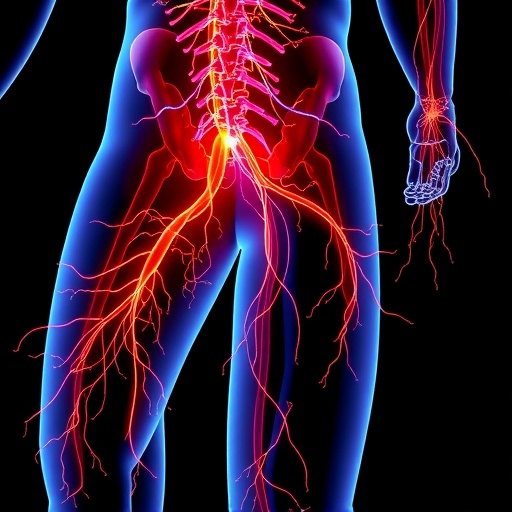
Credit: Photo by Malin Arnesson
When bedbound intensive care patients are moved within a hospital, the single most common risk factor is nonfunctioning technology and equipment. These transfers, a well-known moment of risk, have been studied in a University of Gothenburg thesis.
Moving critically ill patients within a hospital, for investigations and treatments, always entails risks. Today, however, the majority of these patients are in need of transport to be X-rayed or undergo surgery, for example.
The issue is highly topical in connection with the challenges posed by COVID-19. The situation means that severely ill, bedbound patients increasingly need to be transported both within and between hospitals.
The Gothenburg thesis shows that the risks are common. Altogether, its author identified 365 risks in the course of 51 transfers to and from two ICU units at a Swedish university hospital. The median was seven identified risks per transfer.
In her research Lina Bergman, an intensive care nurse with a PhD in health and care sciences at Sahlgrenska Academy, University of Gothenburg, focused on patient safety — something that faces real challenges when severely ill patients have to be moved.
“The most salient risk area was technology and equipment. For one thing, there were technical errors and defects: monitoring stopped working or an alarm was set off on entry into a lift shaft or the like. But it was mainly a matter of poor adaptation: that the equipment couldn’t be attached to the bed properly or, for example, the ventilator tubes were for short,” she says.
Other risks in the hospital environment itself might be narrow passages, long transport distances or risks associated with shortcomings in coordination and communication. Nonetheless, Bergman’s results indicate that the staff succeed in managing most of the risks. Serious incidents are few.
“I think everyone who works in intensive care has experienced these failings, which tend easily to be normalized. We’re so used to not having the right conditions, working around the problems, and finding our own solutions so that, in the end, the patient doesn’t suffer,” she says.
The fact that the patients generally feel safe and secure is evident from interviews in the thesis. They had great trust in the expertise of the intensive care staff, and felt that they received information and underwent preparations ahead of the various stages a transfer may involve.
The pressure on the staff, on the other hand, is very evident. They perceive intrahospital transport as a moment of high risk, and this also emerges in the interviews. Carrying out patient transfers undoubtedly also imposed stringent requirements in terms of well-functioning teamwork.
Caring for critically ill patients during transfers within the hospital was also sometimes perceived as stressful and precarious when they were a long way from the intensive care unit, in the event of the patient’s condition deteriorating or any incident taking place.
Proposed improvements that were emphasized are checklists, safety enhancements in the surroundings, and coordination throughout the hospital.
###
Title: Patient safety during intrahospital transports in intensive care. Hazards, experiences and future measurements, http://hdl.
Media Contact
Lina Bergman
[email protected]
Original Source
https:/





